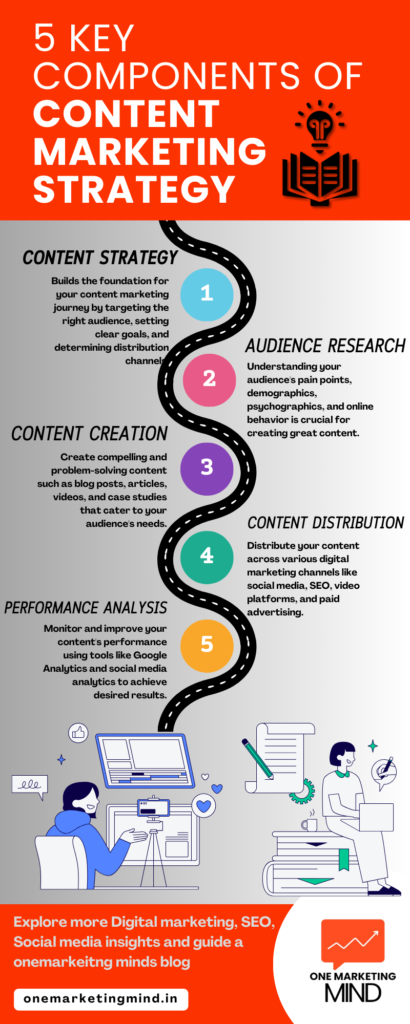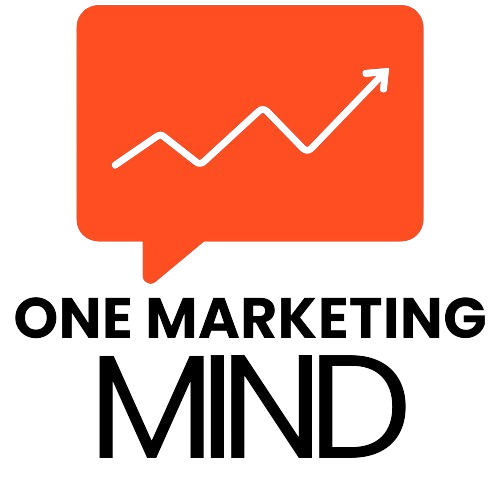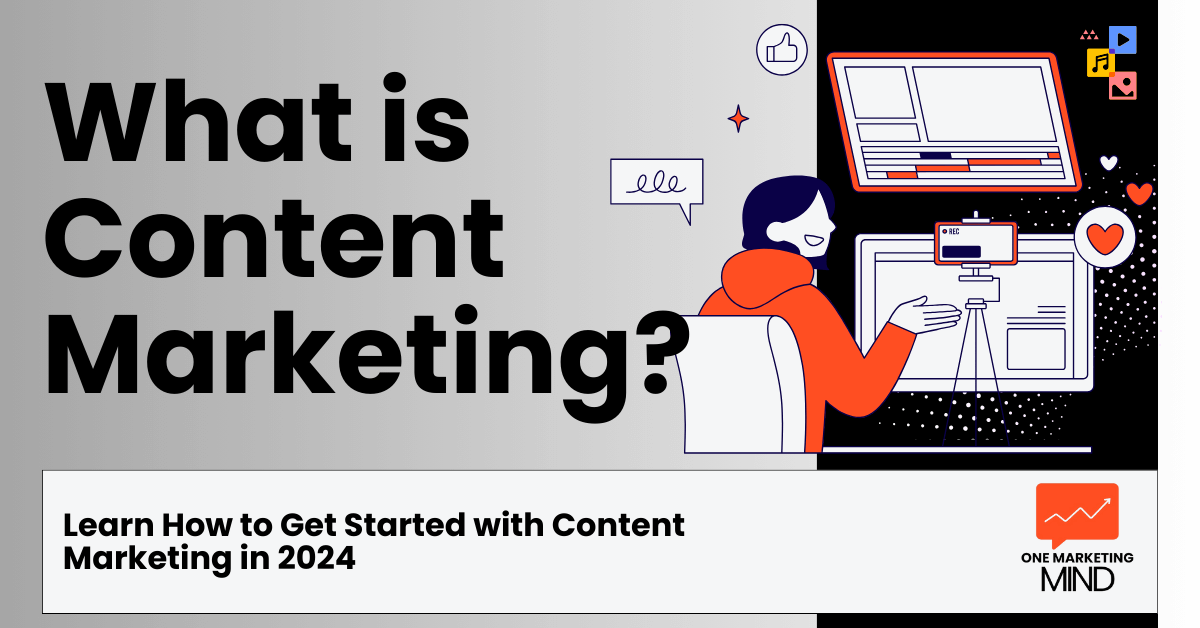Are you ready to supercharge your online presence in 2025? Welcome to the dynamic world of content marketing, where your path to success is just a click away! In today’s digital landscape, content marketing isn’t merely an option—it’s a necessity. Businesses of all sizes are leveraging its power to enhance brand awareness, drive traffic, and attract valuable leads.
Content marketing is a strategic approach focused on creating and distributing valuable, relevant, and consistent content to engage a clearly defined audience and drive profitable customer action. Instead of directly pitching products or services, this method delivers useful content to help your prospects and customers solve problems in their work or personal lives, establishing your brand as a thought leader.
In this comprehensive guide, “What is Content Marketing and How to Get Started in 2025,” we will explore the essential strategies and benefits of content marketing. You’ll discover how to craft compelling content, distribute it effectively, and measure its impact to ensure your marketing efforts yield significant returns.
Stay tuned as we delve into the core principles of content marketing, providing you with actionable tips and insights to kickstart your content marketing journey in 2025 and beyond. Let’s transform your digital strategy and set your business on the path to sustained growth and success.
Table of Content
What is content marketing?
Content marketing is the strategy of digital marketing. Which is focusing on creating and distributing content consistently that is relevant and valuable to targeted audiences. Ultimately, to help retain existing users, attract new users to take profitable actions, and provide them with quality information
Content Marketing Definition
It is a marketing practice that involves in creating and sharing relevant, valuable and consistent content for any business or brand,For example, creating and sharing, blogs, article, social media posts, whitepapers, press release, guest posting, videos, pdf and more,
It is used to promote and distribute content to enhance user experience, generate quality leads, and attract new users for business.
Evolution of Content Marketing
Content marketing has a long history. Brands used it to connect with their audience via storytelling and informational content. But, the digital revolution has changed the content marketing landscape. Now its allowing businesses to reach and engage global audiences through online channels.
Current state and important statistics about content marketing
Content marketing is still the most valuable marketing strategy because of its impact. Every business needs to provide content that attracts its audience and content marketing makes it possible. According CMI 70% of #B2C marketers say #ContentMarketing is more important in their organization than last year. Check resource
Content Marketing trends
- This year, 54% of businesses plan to increase their content marketing budgets.. –
- A very successful content strategy is reported by 19% of businesses using AI content generation tools.
- When businesses allocate 10% to 50% of their content efforts to content design, they have a 33% higher chance of achieving successful outcomes.
Via Siege Media + Clearscope
B2B Content Marketing Statistics
- The top three performing B2B content assets in 2023 were case studies/customer stories, videos, and thought leadership ebooks/white papers. (Source – content marketing institute)
- While creating content, 78% of B2B marketers use keyword research for SEO. (Source- CMI)
5 Key Components of Content Marketing Strategy
To get success in content marketing strategy, it needs to focus on the following key components:
- Content strategy
- Audience Research
- Content creation
- Content distribution
- Performance analysis

Lets explore each component in detail
1. Creating a content strategy
A clear and well-defined content strategy builds the foundation for your content marketing journey. This helps you find a targeted audience, determine what type of content they like to consume, set clear goals, determine distribution channels, and measure performance.
2. Audience research
Understanding who your targeted audience is is crucial for creating great content. It involves finding pain points, demographics, psychographics, and their online behavior.
3. Content creation
Once you understand your target audience, it’s time to start writing content. This content may be blog posts. Article. Videos. Case studies, etc. This content should be compelling and problem-solving for what your audience needs.
4. Distribution of content
Once you generate content, it needs to be distributed over the internet using different digital marketing channels. These channels are social media, search engine optimization, video platforms, and paid advertising.
5. Performance analysis
Now the final step is to monitor the performance of distributed content. You can use different performance monitoring tools, like Google Analytics and Google Search Console. Social media analytics and email marketing tools. Monitoring and improving content is a repeating strategy until you get the desired result.
With these five key components or strategies, content marketing works. So while designing a content marketing strategy, you must follow these components to get better performance.
Types of Content in Marketing
In Digital marketing we can introduce content in various types. Depending upon its need and use we could create and share multiple content types of content format as mentioned below. Let have look on most popular and used content types in marketing.
Blog Posts
Creating blog post and publishing on websites These posts are on specific topics Consistently publish high-quality, SEO-optimized blog posts to attract and engage your target audience.
Infographics
This most popular tool for Visual representations of information or data. The main purpose of infographics is to provide information and simple and visual format. Design visually appealing infographics with clear and concise information to increase shareability and engagement.
Videos
Businesses can generate useful videos. This content is in video format, ranging from educational tutorials to entertaining storytelling. Create engaging and informative videos with captivating visuals and storytelling to keep viewers hooked.
Ebooks
These are PDF formatted documents used to combine high quality information. These Ebooks are helpful for reading and saving content. Comprehensive, long-form content pieces offering in-depth knowledge on a specific topic or subject. Provide valuable and actionable insights in ebooks/guides to establish authority and build trust with your audience.
Case Studies
Generating and demonstrating real time experience about the success stories, brand growth and other researched data in useful manner..Detailed accounts of real-life scenarios or experiences, demonstrating how a product or service solved a specific problem. Use real data and testimonials to highlight the tangible results achieved by your product or service.
Podcasts
This type is easy to use and popular among all users.Audio content series featuring discussions, interviews, or storytelling on various topics. Podcasts are accessible for on-the-go consumption.Consistently release high-quality podcast episodes with engaging content to grow and retain your audience.
Webinars and Online Workshops
Live or pre-recorded online presentations or workshops, offering valuable insights and interactive learning experiences.Promote webinars/online workshops across multiple channels and encourage audience participation through Q&A sessions and polls
Social Media Posts
To gain and retain audience social media posts useful. Using top social media platforms like facebook, twitter, instagram and linkedin Short-form content pieces shared on social media platforms to engage followers, drive traffic, and promote brand awareness. Tailor content to each social media platform and leverage visual elements to increase engagement and reach.
Whitepapers
Creating In-depth reports or documents providing authoritative insights, analysis, and recommendations on a specific topic. To generate best whitepaper offer valuable and data-driven insights in whitepapers to position your brand as a thought leader in the industry.
Benefits and Importance of Content Marketing
Content marketing helps you to bring high quality leads and attract new audiences or customers for bsuiness.
Content marketing is more than just creating and sharing content. It’s about crafting compelling narratives that resonate with your target audience, providing them with valuable insights, information, and entertainment. By consistently delivering high-quality content, you can build trust and credibility with your audience, positioning your brand as an authority in your industry. This strategy will ultimately improve your brand presence, authority and build trust among your audience.
Top Benefits of Content Marketing
Content marketing has become a cornerstone strategy for businesses to connect with their audience, build brand authority, and drive conversions. Let’s explore the multitude of benefits it offers:
Helps in Audience Retention
Engaging and relevant content keeps your audience coming back for more, fostering loyalty and trust.
Increases Brand Awareness
Consistently producing valuable content increases your brand’s visibility and recognition among your target audience.
Improve Lead Generation and Increased Conversions
Quality content attracts and nurtures leads, guiding them through the buyer’s journey and ultimately driving conversions.
Helps to Generate Industry Authority
By sharing insightful content and expertise, you establish yourself as a knowledgeable authority in your industry, earning respect and credibility.
Getting Higher SERP Ranking
Search engines prioritize fresh, relevant content, leading to improved visibility and higher rankings in search engine results pages (SERPs).
Create Loyal Brand Advocates
Compelling content inspires advocacy, turning satisfied customers into passionate brand ambassadors who actively promote your brand.
Boost Your Website Traffic
Valuable content attracts organic traffic to your website, increasing opportunities for engagement and conversions.
Increase Your Social Media Following
Sharing engaging content on social media platforms enhances your brand’s social presence and attracts new followers.
Building Better Customer Service
Educational content addresses customer pain points and FAQs, providing solutions and enhancing the overall customer experience.
You can reach your audience with different Learning Formats
Diverse content formats such as articles, videos, infographics, and podcasts cater to different learning preferences, maximizing audience engagement.
Teaches You About Your Audience
Analyzing content performance and audience interactions provides valuable insights into audience preferences, behaviors, and interests.
Enhances Customer Experiences
Personalized and relevant content creates meaningful interactions with customers, fostering stronger relationships and loyalty over time.
How to Use Content Marketing With Other Marketing Channels?
Content marketing is not only something that helps to build your audience and not only can do it. If you integrate content marketing with all other marketing channels then it will generate the positive impact
Let see how to we could integrate other marketing channels with Content
1. For Social Media Marketing:
Share content across various social media platforms to increase visibility and engagement. Use captivating visuals and compelling captions to encourage sharing and interaction.
- Share blog posts, infographics, and videos across social media platforms to increase visibility and engagement.
- Create social media-specific content that complements website content and encourages sharing and interaction.
2. For Email Marketing:
Distribute content through email newsletters to nurture leads and maintain customer relationships. Personalize content based on subscriber preferences for higher engagement rates.
- Incorporate content links in email newsletters to drive traffic back to the website.
- Use content as valuable resources or incentives to encourage email sign-ups.
3. For Influencer Marketing:
Collaborate with influencers to promote content to their followers, leveraging their authority and credibility within specific niches.
- Collaborate with influencers to create content that aligns with their audience and brand message.
- Leverage influencer-created content on the website to amplify reach and credibility.
4. For SEO (Search Engine Optimization):
Optimize content with relevant keywords, meta tags, and internal linking to improve organic search visibility and drive targeted traffic to the website. In addition to creating great content, it’s essential to optimize it for search engines to ensure maximum visibility.
By incorporating relevant keywords, optimizing meta tags, and structuring your content with proper headings and subheadings, you can improve your chances of ranking higher in search engine results pages (SERPs). This not only increases your organic traffic but also helps establish your brand as a trusted authority in your niche.
- Optimize meta title, description and content optimization for targeting keyword
- Create section that fulfills the user needs and grab attention
5. For Paid Advertising:
Amplify content reach through targeted advertising campaigns on platforms like Google Ads, Facebook Ads, and LinkedIn Ads. Tailor ad messaging to match the content offering for better alignment and conversion rates.
- Align content keywords with PPC ad campaigns to improve ad relevance and quality score.
- Develop landing pages with targeted content to enhance the effectiveness of SEM efforts and improve conversion rates.
6. For Offline Marketing:
Integrate content into offline marketing efforts such as print materials, event presentations, and direct mail campaigns to maintain consistency across all touchpoints and reinforce brand messaging.
- Include website URLs in print materials, such as brochures or business cards, to direct offline audiences to online content.
- Host events or workshops and use content as educational material or handouts to reinforce brand messaging.
7. For Partnerships and Collaborations:
Team up with complementary businesses or organizations to co-create and distribute content, expanding reach and tapping into new audience segments.
- Pitch guest blogging opportunities to industry publications to expand content reach and establish thought leadership.
8. For Community Engagement:
Engage with online communities and forums relevant to the industry to share valuable content and establish thought leadership, fostering trust and credibility among community members.
9. For Content Syndication and PR:
Syndicate content to relevant third-party websites, publications, and content aggregators to reach new audiences and drive traffic back to the website.
- Utilize press releases to promote significant content pieces, such as whitepapers or research studies.
How to Measuring Success of content marketing
To ensure the effectiveness of your content marketing efforts, it’s essential to track and measure your results regularly. Utilize tools like Google Analytics to monitor website traffic, engagement metrics, and conversion rates. By analyzing this data, you can identify what’s working well and what areas need improvement, allowing you to refine your content strategy for optimal results
Another crucial aspect of content marketing is building backlinks from reputable websites in your industry. Backlinks not only drive referral traffic to your site but also signal to search engines that your content is credible and authoritative. By creating high-quality content that other websites want to link to, you can improve your search engine rankings and increase your domain authority over time.
You may also like to read : Types of content writing styles in marketing.
Conclusion
Content marketing is a powerful tool for building brand awareness, driving traffic, and generating leads. By creating engaging, optimized content tailored to your audience’s needs, you can establish your brand as a trusted authority in your industry and drive meaningful results for your business. Embrace the power of content marketing today and take your online presence to new heights!
FAQs about Content marketing
How to create Engaging Content?
The key to successful content marketing lies in creating engaging and relevant content that captures the attention of your audience. Whether it’s blog posts, articles, videos, infographics, or social media posts, each piece of content should offer something of value to your audience. By understanding your audience’s needs, interests, and pain points, you can tailor your content to address their specific challenges and provide solutions that resonate with them.
When creating video marketing content on a budget what is the first thing you should consider doing?
When creating video marketing content on a budget, the first thing you should consider doing is focusing on your storytelling and messaging. By crafting a compelling narrative that resonates with your audience, you can create impactful videos that captivate viewers and effectively communicate your brand’s message, even with limited resources. Additionally, optimizing your video content for search engines by incorporating relevant keywords in titles, descriptions, and tags can help improve its visibility and reach online.
What are the 5 C’s of content marketing?
The 5 C’s of content marketing are:
Content: Refers to the creation and development of valuable, relevant, and engaging content that resonates with the target audience.
Context: Involves understanding the audience’s needs, preferences, and behaviors to deliver content that is timely, relevant, and meaningful.
Clarity: Focuses on delivering clear and concise messaging to ensure that the content is easy to understand and digest by the audience.
Consistency: Emphasizes the importance of maintaining a regular and predictable publishing schedule to keep the audience engaged and coming back for more.
Conversion: Aims to drive desired actions from the audience, whether it’s making a purchase, signing up for a newsletter, or engaging with the brand on social media.
What are the 3 E’s of content marketing?
The 3 E’s of content marketing are:
Engagement: Content should be designed to capture the audience’s attention and encourage interaction, whether through likes, comments, shares, or other forms of engagement.
Education: Content should provide valuable information, insights, or knowledge that educates the audience and helps them solve problems, make informed decisions, or learn something new.
Entertainment: Content should entertain and delight the audience, making them enjoy the experience of consuming the content, whether through humor, storytelling, or visually appealing elements.
What are content marketing strategies?
1. Content Creation: Developing high-quality, relevant, and valuable content tailored to the target audience’s interests and needs.
2. Content Distribution: Strategically sharing content across multiple channels such as social media, email newsletters, and industry forums to increase visibility and reach.
3. Content Optimization: Optimizing content for search engines by incorporating relevant keywords, meta tags, and structured data markup to improve organic search visibility.
4. Audience Engagement: Actively engaging with the audience through comments, shares, and discussions to foster relationships and build a loyal community.
5. Content Repurposing: Repackaging and repurposing existing content into different formats such as videos, infographics, and podcasts to reach new audiences and extend content lifespan.
6. Influencer Collaboration: Partnering with influencers or industry experts to co-create or endorse content, leveraging their authority and reach to expand brand awareness and credibility.
7. Performance Tracking: Monitoring and analyzing content performance metrics such as website traffic, engagement rates, and conversion rates to measure effectiveness and optimize future strategies.
8. Continuous Improvement: Iteratively refining and evolving content marketing strategies based on insights and feedback to stay relevant and competitive in the ever-changing digital landscape.

